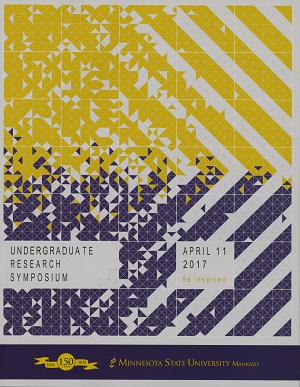Cardiac Activator Drug Effects on Myosin Structure and Function
Location
CSU Ballroom
Start Date
11-4-2017 10:00 AM
End Date
11-4-2017 11:30 AM
Student's Major
Chemistry and Geology
Student's College
Science, Engineering and Technology
Mentor's Name
Rebecca Moen
Mentor's Department
Chemistry and Geology
Mentor's College
Science, Engineering and Technology
Description
Heart failure is an emerging epidemic in the United States, for example, between 1996 and 2006 the number of hospitalizations due to heart failure rose by 25%. Systolic heart failure is caused by a decrease in heart contractility. One approach to treat heart failure is to increase heart muscle contractility. This can be achieved by using cardiac activators. One example of a cardiac activator is the drug EMD 57033 (Merck). This drug is known to specifically interact with the motor protein in cardiac muscle called myosin. Muscle contraction uses force generated from the interaction of two proteins, myosin and actin. Myosin utilizes the universal biological energy source adenosine triphosphate (ATP) through the mechanism of chemo-mechanical coupling, breaks down ATP to adenosine diphosphate (ADP) and phosphate as it produces mechanical force. During the process of contraction, myosin undergoes a series of structural changes involving the actin-binding region, the ATP binding pocket of myosin and the force-generating domain. EMD 57033 is a drug compound that binds to myosin in the force-generating region and increases both actin-myosin interaction as well as the rate of ATP breakdown. Myosin II from the organism Dictyostelium will be used as it serves as the classic model system for studying myosin II structure. My hypothesis is that EMD 57033 will increase the rate of ATP hydrolysis in myosin II and increase actin-myosin functional interaction. This change in function is likely due to changes in the internal structural dynamics in the myosin motor, specifically in the force-generating region.
Cardiac Activator Drug Effects on Myosin Structure and Function
CSU Ballroom
Heart failure is an emerging epidemic in the United States, for example, between 1996 and 2006 the number of hospitalizations due to heart failure rose by 25%. Systolic heart failure is caused by a decrease in heart contractility. One approach to treat heart failure is to increase heart muscle contractility. This can be achieved by using cardiac activators. One example of a cardiac activator is the drug EMD 57033 (Merck). This drug is known to specifically interact with the motor protein in cardiac muscle called myosin. Muscle contraction uses force generated from the interaction of two proteins, myosin and actin. Myosin utilizes the universal biological energy source adenosine triphosphate (ATP) through the mechanism of chemo-mechanical coupling, breaks down ATP to adenosine diphosphate (ADP) and phosphate as it produces mechanical force. During the process of contraction, myosin undergoes a series of structural changes involving the actin-binding region, the ATP binding pocket of myosin and the force-generating domain. EMD 57033 is a drug compound that binds to myosin in the force-generating region and increases both actin-myosin interaction as well as the rate of ATP breakdown. Myosin II from the organism Dictyostelium will be used as it serves as the classic model system for studying myosin II structure. My hypothesis is that EMD 57033 will increase the rate of ATP hydrolysis in myosin II and increase actin-myosin functional interaction. This change in function is likely due to changes in the internal structural dynamics in the myosin motor, specifically in the force-generating region.
Recommended Citation
Straka, Madeline. "Cardiac Activator Drug Effects on Myosin Structure and Function." Undergraduate Research Symposium, Mankato, MN, April 11, 2017.
https://cornerstone.lib.mnsu.edu/urs/2017/poster-session-A/35



